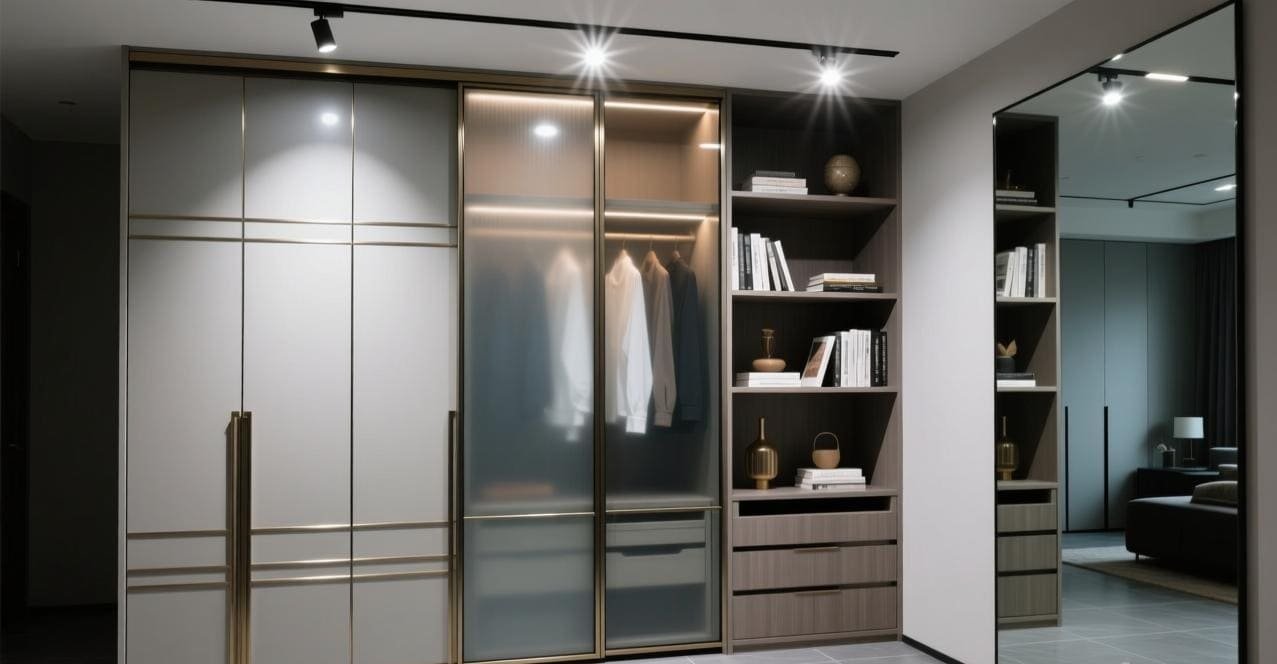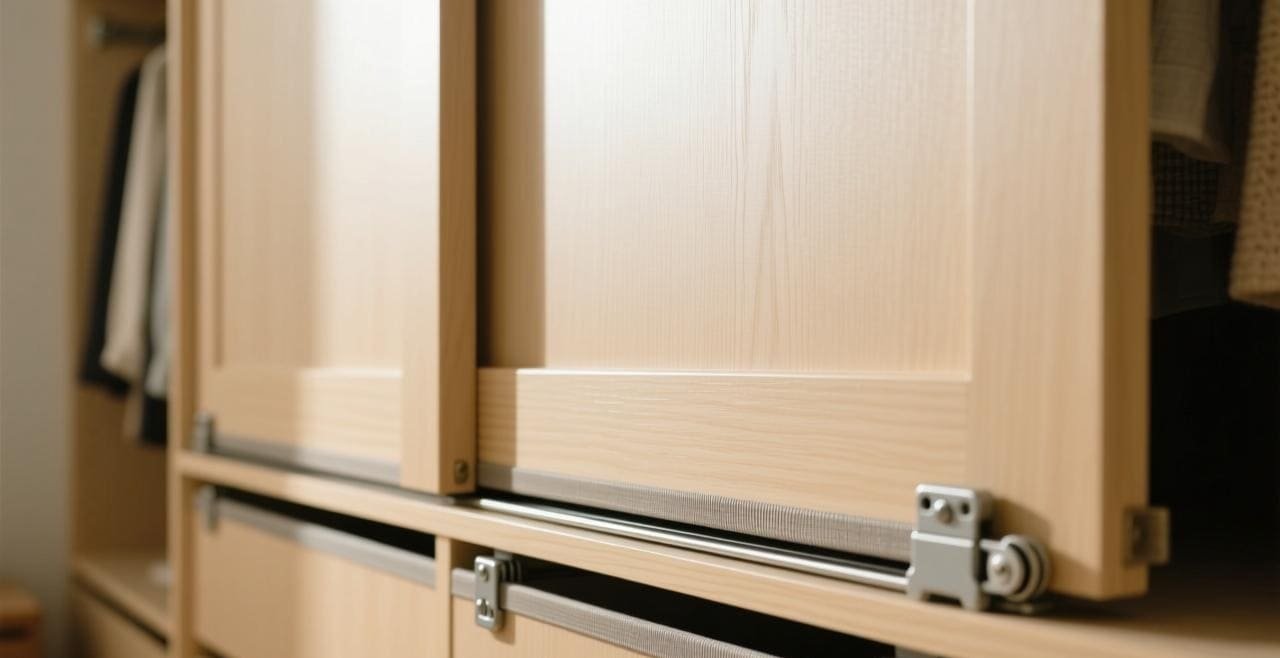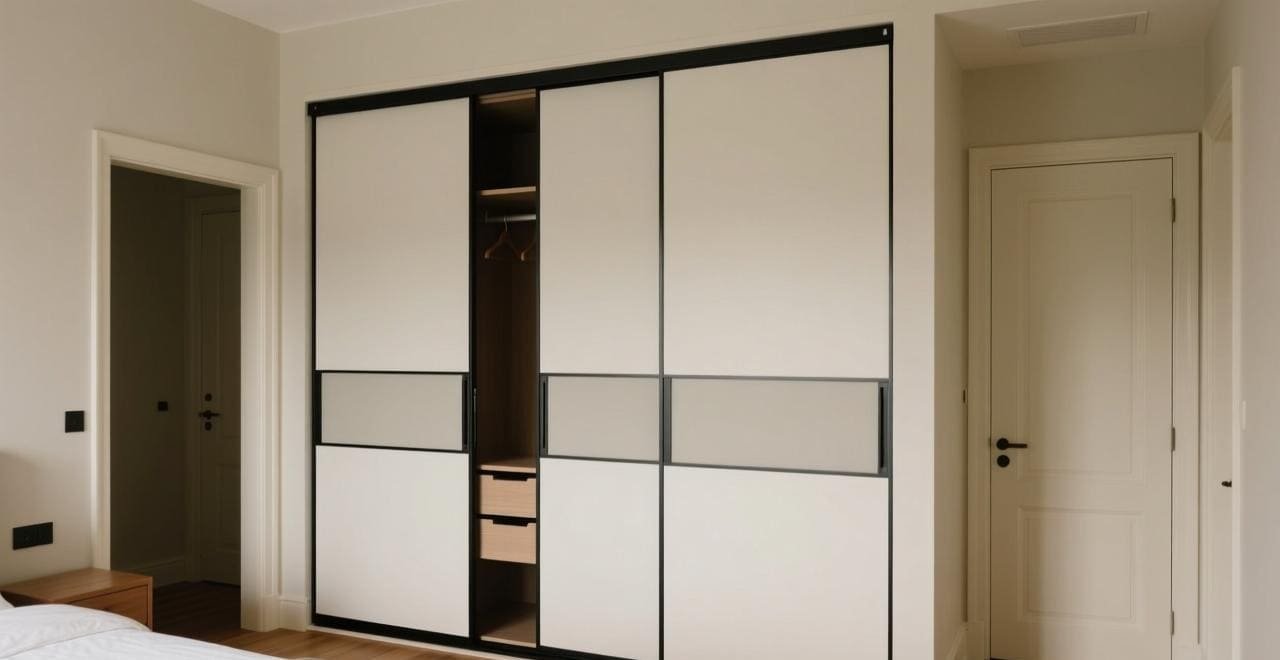Struggling with noisy, jamming wardrobe doors? The pulley material is often the problem. A poor choice leads to frustration and frequent replacements, costing you time and money.
Wardrobe pulleys are typically made from metal alloys, plastic composites like nylon, or fiberglass. The choice of material directly impacts the door’s smoothness, noise level, and long-term durability. Metal offers strength, while nylon and fiberglass provide quiet operation.

Understanding these materials is the first step. But how do you know which one is right for your specific project? As a factory owner, I see these choices made every day when working with clients like you. The details matter, and getting them right can make a huge difference in the final product’s quality and your customer’s satisfaction. Let’s break it down further so you can make the best purchasing decision.
What is a pulley made up of?
Focusing only on the wheel material is a common mistake. If the other components in the assembly are low quality, the entire sliding door system can fail, causing wobbles and jams.
A complete wardrobe pulley is an assembly made of several parts. It includes the wheel (nylon, metal, fiberglass), a housing (steel or plastic) that holds it, steel ball bearings for smooth rotation, and a steel axle pin.

I often explain to new buyers that a pulley is more than just a wheel. It’s a complete system, and every part has to be strong and work together. A great wheel in a weak housing will fail every time. When you source from my factory, we look at the entire assembly to make sure it meets your performance needs.
The Core Components: Wheel, Housing, and Bearings
The housing is the frame that holds everything together. For heavy-duty applications, we use a stamped steel housing for maximum strength. For standard residential use, a high-density plastic housing can be a very durable and cost-effective option. The real secret to a smooth, silent glide is the bearings. Cheap pulleys have no bearings at all. Quality ones, like we produce, use precision steel ball bearings1. These tiny parts do the hard work of reducing friction, which is what allows a heavy door to move with just a gentle push.
The Supporting Structure: Axles and Mounts
The axle is the pin the wheel spins on. It must be perfectly straight and strong. We use hardened steel2 to ensure it never bends under the door’s weight. The mounting bracket is what attaches the entire assembly to the door panel. This part takes a lot of stress, so we use thick-gauge steel or strong aluminum to prevent it from deforming over time. When a purchaser like Jacky from Canada sends me a spec sheet, he knows to check the material for every single one of these parts, not just the wheel.
What is the best steel for pulleys?
You see "steel pulley" on a supplier’s list, but not all metals are equal. Choosing the wrong type can lead to premature rust, bending under pressure, or unnecessary costs for your project.
For pulley wheels, cast zinc alloy is a common high-strength choice. For components like housings and brackets, carbon steel offers strength, while stainless steel provides superior corrosion resistance for humid environments.

In my factory, "metal" is not a specific enough term. We need to know the application to recommend the right alloy or steel type. A door for a bathroom vanity needs different protection than a door for a bedroom closet in a dry climate. Getting this detail right prevents future warranty claims and ensures the hardware lasts.
Zinc Alloy1 for Pulley Wheels
When we make metal pulley wheels, we often use a zinc alloy. It’s an excellent material for a process called die-casting. This allows us to create strong, complex wheel shapes with high precision. It’s very strong and has a great load-bearing capacity, making it perfect for heavy solid wood or glass doors. While technically not "steel," it’s the go-to "metal" choice for the wheel itself due to its balance of strength, durability, and manufacturing efficiency.
Carbon Steel vs. Stainless Steel2
For the other parts of the assembly, like the housing and mounting plates, we typically choose between carbon steel and stainless steel. Carbon steel is incredibly strong and hard, making it ideal for supporting heavy loads. It is our standard for most applications. However, if the hardware will be used in a place with high humidity, like a bathroom, a coastal home, or a spa, I always recommend upgrading to stainless steel. It costs more, but its ability to resist rust is essential in those environments. We recently helped a client in Southeast Asia switch to stainless steel components after they had issues with rust on hardware from a previous supplier.
| Metal Type | Key Property | Common Use in Pulley System |
|---|---|---|
| Zinc Alloy3 | High Strength & Castability | The pulley wheel itself |
| Carbon Steel | Very Strong & Hard | Housings, mounting brackets, axles |
| Stainless Steel4 | Corrosion Resistance | All components for humid areas |
What are hand pulleys made of?
The term "hand pulley" can be confusing for furniture hardware. Ordering based on this general term could mean you get a product that is too weak for your wardrobe door application.
In the furniture world, a "hand pulley" generally refers to a simple roller for lightweight, hand-operated panels. These are typically made from basic, cost-effective materials like nylon or other simple plastics, designed for very light loads.

When a buyer asks me for a "hand pulley," I first need to clarify the application. The term is broad and can mean different things. In our industry, it usually points toward the most basic type of roller system. It’s important to distinguish these from the high-performance systems needed for full-size wardrobe doors.
Simple Materials for Light-Duty Jobs
For small, lightweight applications, a complex system is not necessary. Think of a sliding panel on a TV console, a small cabinet in an office, or a lightweight screen. For these uses, a simple pulley made from molded nylon5 is perfect. The wheel might spin on a simple plastic or metal post with no bearings at all. The entire assembly is designed for low-stress, occasional use. The load is minimal, and the main requirement is just to allow a panel to slide back and forth. These are mass-produced and are very cost-effective, but they should never be used for heavy doors.
Matching the Pulley to the Task
As a manufacturer, we produce the full range of products, from these simple nylon rollers to heavy-duty steel systems6. The most important job for a purchasing manager is to correctly identify the needs of the project. Using a simple "hand pulley" on a 40kg wardrobe door will lead to immediate failure. Conversely, using a heavy-duty system on a 2kg cabinet door is wasteful and adds unnecessary cost. When you work with us, we help you match the product specifications to the exact demands of your furniture, ensuring you get the right performance at the right price.
What are the materials used in fixed pulleys?
"Fixed pulley" is another term that can cause confusion. In a sliding door system, the pulley assembly is fixed to the door, but the door itself moves. Understanding this helps clarify material needs.
A "fixed pulley" on a sliding door is the entire roller assembly. Its materials include a wheel (nylon, fiberglass, metal), a housing (steel, plastic), and steel components like the axle and bearings, all fixed to the door panel.

In physics, a fixed pulley stays in one place. In our work, the pulley assembly is "fixed" or bolted onto the door. This assembly is the heart of the system, and its materials are chosen based on whether the door is top-hung or bottom-rolling. The function of the fixed component determines what it needs to be made of.
Materials for a Top-Hung Fixed Assembly
In a top-hung system7, the assemblies fixed to the top of the door carry the entire weight. This means every part must be strong. The mounting bracket will be thick steel or aluminum to prevent bending. The housing will be steel to handle the load. The wheel material will be chosen based on the door’s weight—nylon for light doors, fiberglass for medium, and zinc alloy for heavy doors. The whole system is engineered for strength and durability because it’s doing all the work against gravity.
Materials for Bottom-Rolling Systems and Guides
In a bottom-rolling system8, the load-bearing wheels are fixed to the bottom of the door. These assemblies are similar in construction to top-hung ones, built with strong materials to carry weight. However, these systems also have "fixed guides" at the top. These guides are not pulleys and do not bear any weight. Their only job is to keep the top of the door stable in the track. Because of this, they are often simple, small blocks made of nylon. They are "fixed" to the door, but their material requirement is only for low friction and wear resistance, not strength. A buyer needs to specify both the load-bearing fixed pulleys and the non-load-bearing fixed guides.
Conclusion
The best material for a wardrobe pulley depends on your door’s weight, your budget, and the need for silent operation. Matching the right materials to your specific project is key.
-
Understanding precision steel ball bearings can enhance your knowledge of smooth operation in heavy-duty applications. ↩ ↩
-
Exploring hardened steel will provide insights into its strength and applications in various structural components. ↩ ↩
-
Explore the advantages of Zinc Alloy in pulley wheels, including its strength and precision in manufacturing. ↩
-
Learn why Stainless Steel is essential for durability in humid conditions, preventing rust and ensuring longevity. ↩
-
Explore this link to understand the advantages of molded nylon pulleys for lightweight applications. ↩
-
Learn about heavy-duty steel systems and their applications to ensure you choose the right solution for your needs. ↩
-
Understanding top-hung systems can help you choose the right door assembly for your needs, ensuring durability and strength. ↩
-
Exploring bottom-rolling systems will provide insights into their benefits, helping you make informed decisions for your door installations. ↩

